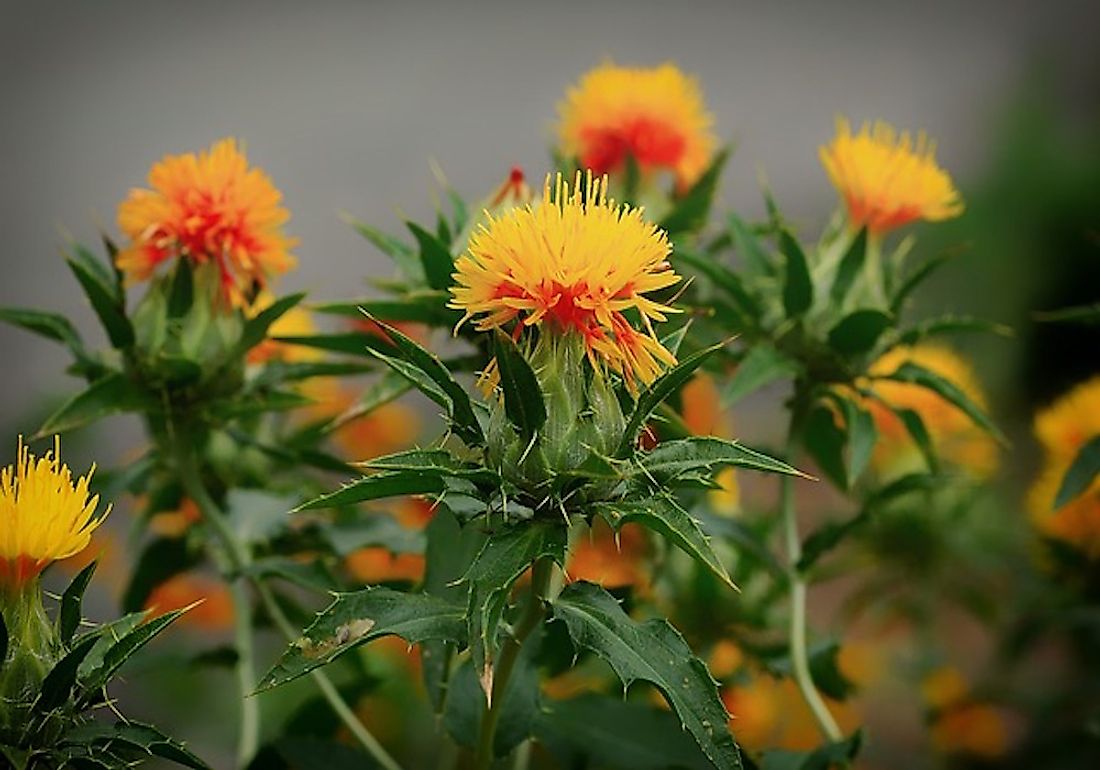World's Top Safflower Producing Countries

Safflower (Carthamus tinctorius) is an annual, herbaceous plant that is commercially cultivated to extract vegetable oil from seeds.
Description Of The Safflower Plant
The safflower plants are 30 to 150 cm tall with yellow, orange or red flowers growing on globular flower heads. One branch of the plant bears about 1 to 5 flower heads with each head carrying about 15 to 20 seeds. The deep taproot system of the plant allows it to thrive well in arid environments that receive seasonal rainfall.
History Of Use Of Safflower
Safflower is one of the oldest crops grown by humans. The analysis of ancient Egyptian textiles from the 12th dynasty reveals the use of safflower dyes as coloring agents. Safflower garlands have even been found decorating the tomb of pharaoh Tutankhamun. The use of safflower later spread to Europe and from there to other parts of the world.
Production Of Safflower
The world production of safflower seeds in 2013 amounted to 718,161 tons. With a production value of 174,900 tons, Kazakhstan was the leading producer of this crop in the world in the same year. The production of safflower in Kazakhstan accounted for 24% of the total global safflower production. India and the United States ranked second and third in safflower production in 2013 with production values of 109,000 tons and 95,360 tons, respectively.
Uses Of Safflower
Traditionally, safflower was cultivated for its seeds and used to flavor foods and color textiles. Red and yellow dyes were prepared from safflower. Extracts of the plant were also used to make medicines. More recently, in the last 50 years, safflower seed vegetable oil has been extracted on a commercial basis from the harvested seeds of the plant.
The safflower seed oil is colorless and flavorless and similar in nutritional composition to the sunflower oil. It is used for cooking, salad dressing, margarine preparation, as well as in cosmetics.
Two main varieties of safflower exist and they produce different kinds of oil. One variety produces oil that is high in monounsaturated fatty acid (oleic acid). This oil is primarily used in cooking. The other variety of safflower is high in polyunsaturated fatty acid (linoleic acid) and is mainly used in paintings.
Another lesser known use of the plant is the use of safflower seeds in cooking as a less expensive substitute for saffron.
The orange-red pigment Carthamin extracted from dried safflower flowers is used as a source of natural dye to color textiles.
World's Top Safflower Producing Countries
| Rank | Country | Production Value (in tons) |
|---|---|---|
| 1 | Kazakhstan | 174,900 |
| 2 | India | 109,000 |
| 3 | United States of America | 95,360 |
| 4 | Mexico | 91,788 |
| 5 | Argentina | 49,770 |
| 6 | Turkey | 45,000 |
| 7 | Russian Federation | 41,766 |
| 8 | China, mainland | 32,002 |
| 9 | Uzbekistan | 25,858 |
| 10 | United Republic of Tanzania | 13,000 |
| 11 | Kyrgyzstan | 12,863 |
| 12 | Ethiopia | 8,347 |
| 13 | Australia | 4,600 |
| 14 | Spain | 4,196 |
| 15 | Canada | 3,004 |
| 16 | Tajikistan | 2,335 |
| 17 | Iran (Islamic Republic of) | 560 |
| 18 | Ukraine | 100 |
| 19 | Pakistan | 23 |
| 20 | Israel | 13 |











